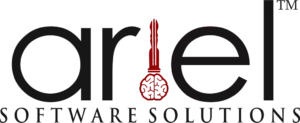
The term “Cloud” refers to the network of computers. Cloud Computing is a paradigm in information technology that enables ubiquitous and easy access to store, retrieve and manage information over the internet rather than storing in the local computing machine. It is a large pool of shared systems that are interconnected with each other and provide dynamically scalable infrastructure for data storage.
The big names in Cloud Computing are Microsoft Azure, AWS (Amazon Web Services) and IBM Cloud. Most of you are probably using Cloud Computing regularly, even if you don’t realize it. If you are using online services like emails, Google Drive to store images, videos, files, etc. Cloud Computing is likely making it all possible. Cloud Computing has divided into three types of services:
IaaS(Infrastructure as a Service) eliminates the capital expense of purchasing and managing physical servers, software, hard drives, and networking equipment. You will be provided virtualized computing resources over a network and need to pay only for what you use and how long used. Some popular examples of IaaS are DigitalOcean, Rackspace, AWS (Amazon Web Services).
PaaS (Platform as a Service) is a Cloud Computing model designed to support complete web application development lifecycle: development, testing, deployment, management, updating. One of the core benefits of PaaS is convenient for users (PaaS provides necessary infrastructure and other IT services via which users can access anywhere in the world through any Computer machine.)The most known examples of PaaS are AWS Elastic Beanstalk, Windows Azure, Heroku.
SaaS (Software as a Service) is also known as On-Demand Computing Software. It allows users to connect and use cloud-based apps over the internet from anywhere around the world. If you are using web-based email services like
Outlook, Hotmail, Gmail then you have already used a SaaS. SaaS eliminates the cost of small-medium to big organizations to install and run web applications on their local computer machine, hardware acquisition and maintenance. The few most popular examples of SaaS are Google Apps, Salesforce, GoToMeeting.
Not all Clouds need to be the same. There are three different types of Cloud Computing deployment models are available at the present and that are described below:
Public Cloud is a complete virtualized environment. It is based on a standard Cloud Computing model where a third-party service provider makes resources available to anyone over the internet. Public cloud services are either free or sold on a pay per usage model. Most salient examples of Public cloud are cloud storage services, cloud hosting, website hosting, and cloud-based development environment.
Private Cloud has similar advantages to Public Cloud but it is only accessible by a single organization or client instead of a general public. Therefore it provides greater control, security, and privacy.
Hybrid Cloud is a Cloud Computing environment which is a combination of both Public and Private Cloud. It allows data and applications to be shared between them. Hybrid Cloud provides organizations greater flexibility, on-demand availability and ease to use. Hybrid Cloud is specifically valuable for dynamic or highly changeable workloads.
Almost all cloud providers have multiple backup locations if in case of failure at a particular site which makes it more reliable and secure. Having said that, the day is not too far when we all use the cloud.

Embark on your business journey by taking the first proactive step.

Harnessing technology to build a sustainable future